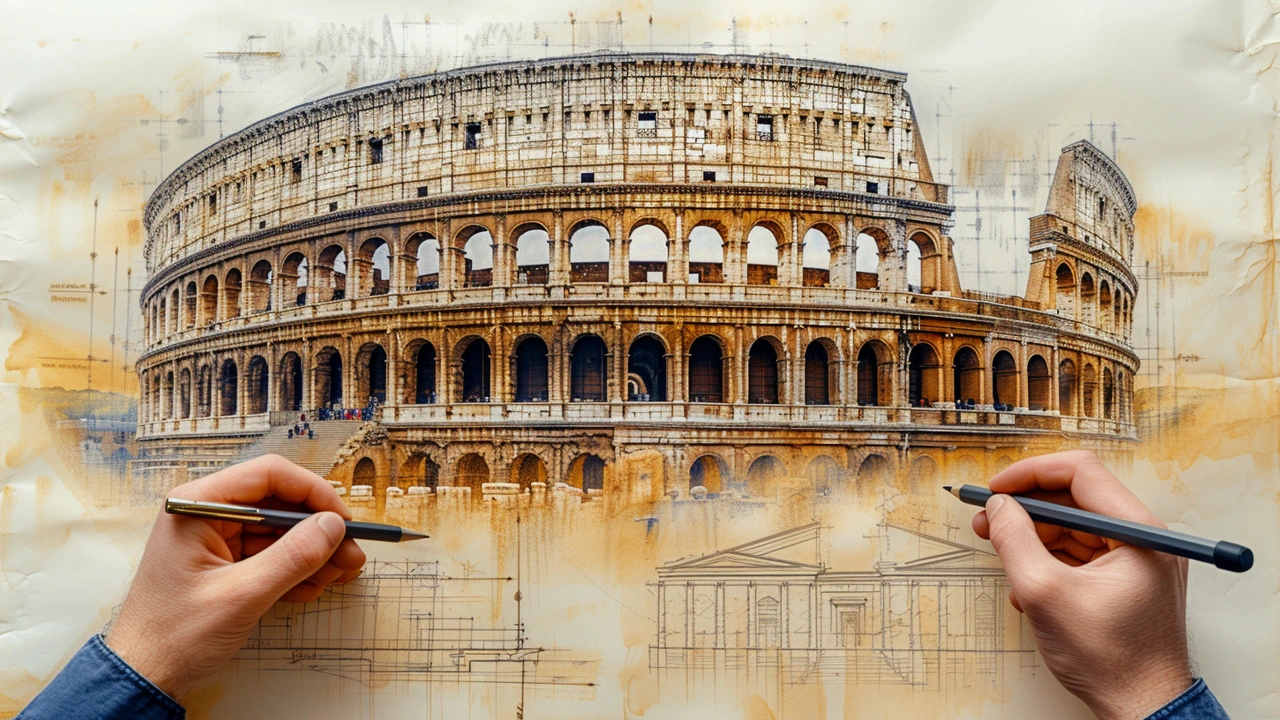Rome's Historical Buildings: How to Read the City's Ancient Stones
Rome's skyline still carries structures older than most countries. Walk one block and you can pass temples, baths, churches and arches that survived wars, earthquakes and city planners. This page helps you spot the key buildings, understand what makes them special, and plan visits that actually fit a day.
If you only have a few hours, start at the Colosseum. It's the obvious showstopper-massive arches, layered orders of columns and the entrance to an ancient entertainment machine. From there walk to the Roman Forum to see ruined temples and the Curia where senators met. Finish with the Pantheon: a perfect dome with an oculus that still amazes engineers.
Must-see buildings and why they matter
Aqueducts: look for long stone channels and arches outside the center; these carried water across miles and show Roman engineering. Baths of Caracalla: huge public complexes with brick vaults and mosaics. Castel Sant'Angelo: started as an emperor's tomb and later became a fortress - great for layers of history. St. Peter's Basilica blends Renaissance and ancient Roman elements; the square was designed to impress and organize crowds.
Don't skip lesser-known spots. The House of the Vestal Virgins in the Forum gives a residential view. The Baths of Diocletian show how public life worked. Off the beaten path, Largo di Torre Argentina holds four temples and a colony of cats - history with a twist.
How to read Roman architecture fast
Start by spotting materials: concrete core with brick or stone facing was a Roman trick - lighter and strong. Notice arches and vaults: repeated arches mean a building used engineering to span space. Domes like the Pantheon use stepped thickness to reduce weight. Decorative orders - Doric, Ionic, Corinthian - usually show the building's purpose: temples often wear Corinthian detail for show, while military or practical structures keep it plain.
Time your visit: early morning or late afternoon avoids crowds and harsh light for photos. Buy combined tickets for Colosseum and Forum to save time. Wear comfy shoes - ancient paving is uneven. Listen for plaques and small signs; many Roman ruins hide clear, short explanations that make a visit richer without a guide.
Preservation matters: look for modern scaffolding and conservation teams. Parts of Rome survive because restorers patch weak mortar, remove harmful plants, and document fragile mosaics. When you visit, don't touch frescoes or climb ruins - small actions help those stones last another thousand years.
If you like maps, carry a pocket map highlighting layers: republican, imperial, medieval and baroque. Seeing those layers in one street makes Rome feel alive. Pick one neighborhood, read its big building, then move on. You'll leave with a clearer idea of how Rome's historical buildings still shape everyday life.
Want context? Spend an hour in a good museum - Capitoline Museums or the National Roman Museum pack artifacts and models that explain ruins better than signs. Combine museum time with street visits: seeing a model then the ruin makes the past click. Plan one themed day: temples, baths or civic buildings. Now.

The Evolution of Ancient Roman Architecture
Hi there! I'm absolutely thrilled to share with you, an intriguing journey through time, spotlighting the fascinating evolution of Ancient Roman architecture. We'll delve into the monumental structures from Republic to Imperial Rome, exploring how the architectural styles and construction techniques evolved over centuries. From majestic aqueducts to grandiose Colosseum, every building tells a story of Rome's historic progression. Join me as we step into the architectural past, appreciating the genius behind Rome's everlasting cityscape.
Read more